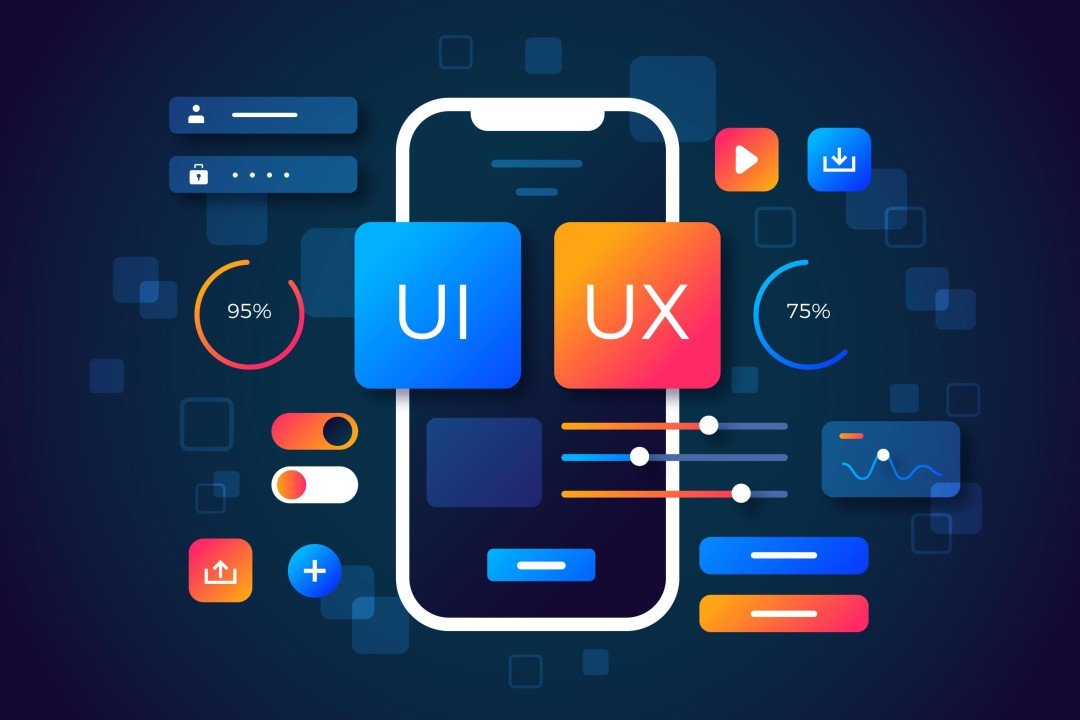In the fast-paced digital world, where mobile devices dominate how users interact with brands, the importance of delivering an outstanding user experience (UX) and a captivating user interface (UI) cannot be overstated. Mobile UI/UX design services are pivotal in crafting applications that not only meet the functional needs of users but also delight them with visually appealing and intuitive designs. These services are essential for businesses aiming to stand out in a competitive marketplace by providing seamless, engaging, and user-centric mobile experiences.
What Are Mobile UI/UX Design Services?
Mobile UI/UX design services involve a comprehensive approach to creating mobile applications that are both aesthetically pleasing and highly functional. This process typically includes research, design, prototyping, testing, and refinement, all focused on ensuring that the final product aligns with the needs and preferences of its target audience.
- UI Design (User Interface): This aspect focuses on the visual components of an app, including the layout, color schemes, typography, and interactive elements. The goal is to create a visually cohesive and attractive interface that guides users through the app seamlessly.
- UX Design (User Experience): UX design emphasizes the overall experience of using the app. It involves structuring the app’s flow, functionality, and content in a way that is logical, intuitive, and efficient. The aim is to make the app as user-friendly as possible, reducing friction and enhancing satisfaction.
The Growing Importance of Mobile UI/UX Design Services
As mobile apps continue to proliferate across all sectors, from retail to healthcare to finance, the quality of the user experience has become a critical factor in determining an app’s success. Businesses are increasingly recognizing that a well-designed app can be a powerful tool for customer engagement, retention, and brand loyalty.
-
First Impressions Matter:
- Visual Appeal: The UI is the first thing users notice when they open an app. A well-designed interface can create a positive first impression, encouraging users to explore further. Conversely, a cluttered or confusing UI can lead to frustration and app abandonment.
- Brand Perception: The design of a mobile app reflects the brand’s identity. Consistent, professional design elements reinforce brand values and enhance credibility, while poor design can harm a brand’s reputation.
-
Enhancing Usability and Functionality:
- Intuitive Navigation: UX design ensures that users can easily find what they need without confusion or unnecessary steps. A clear and intuitive navigation structure reduces the learning curve and makes the app more accessible to a broader audience.
- Efficiency and Speed: A well-designed app streamlines tasks and minimizes the time it takes for users to achieve their goals. This efficiency is particularly important in today’s fast-paced environment, where users expect instant gratification.
-
Increasing User Engagement and Retention:
- Personalization: Modern mobile UI/UX design services often include personalization strategies that adapt the app experience to individual user preferences. This can lead to higher engagement levels, as users feel that the app is tailored to their needs.
- Consistent Experience Across Devices: With the rise of multi-device usage, ensuring a consistent experience across smartphones, tablets, and even desktops is crucial. A responsive design approach helps maintain uniformity, enhancing the overall user experience.
-
Driving Business Goals:
- Conversion Optimization: Whether the goal is to increase sales, capture leads, or boost in-app engagement, a well-designed app can significantly impact conversion rates. By guiding users through a carefully designed journey, UI/UX design services help achieve business objectives.
- Reducing Support Costs: Apps that are intuitive and easy to use reduce the likelihood of user errors and support requests. This not only enhances the user experience but also cuts down on customer service costs.
Key Components of Mobile UI/UX Design Services
To deliver a successful mobile application, UI/UX design services follow a structured process that ensures all aspects of the design are aligned with user needs and business goals.
-
User Research and Analysis:
- Understanding the Target Audience: The first step in any design project is to understand the end-users. This involves gathering data on user demographics, behavior, needs, and pain points through methods like surveys, interviews, and analytics.
- Competitor Analysis: By analyzing competitor apps, designers can identify industry trends, best practices, and potential areas of improvement, ensuring that the app offers a unique and competitive edge.
-
Wireframing and Prototyping:
- Wireframes: These are low-fidelity sketches that outline the basic structure and layout of the app. Wireframes help visualize the flow of the app without the distraction of design details, ensuring that the functionality and navigation are logically planned.
- Prototyping: Prototypes are interactive models of the app that allow stakeholders to experience the app’s flow and interactions before the final design is implemented. This stage is crucial for testing and refining the user experience.
-
Visual Design and Branding:
- Design System Development: A design system includes all the visual elements, such as color palettes, typography, iconography, and imagery, that ensure consistency across the app. This system aligns with the brand’s identity and creates a cohesive look and feel.
- High-Fidelity Mockups: These detailed designs show exactly how the app will look and feel, incorporating all visual elements and design principles. Mockups are used for final approval before moving into development.
-
User Testing and Feedback:
- Usability Testing: Real users interact with the app prototype to identify any issues or areas for improvement. Usability testing is critical for ensuring that the app is intuitive, user-friendly, and meets the needs of its audience.
- Iterative Design: Based on user feedback, designers make iterative improvements to the UI and UX, refining the app to enhance user satisfaction and engagement.
-
Development Collaboration:
- Design Handoff: Once the design is finalized, it is handed off to the development team with detailed specifications, assets, and guidelines. Collaboration between designers and developers is essential to ensure that the design is implemented accurately and efficiently.
- Ongoing Support and Maintenance: Post-launch, the design team may continue to provide support for updates, enhancements, and optimizations, ensuring that the app evolves with user needs and technological advancements.
The Future of Mobile UI/UX Design Services
As technology continues to advance, the field of mobile UI/UX design is poised for exciting developments. Emerging trends such as augmented reality (AR), voice user interfaces (VUI), and artificial intelligence (AI) are set to redefine how users interact with mobile apps.
- AR and VR Experiences: Designers are increasingly exploring the potential of augmented and virtual reality to create immersive and interactive experiences that go beyond traditional mobile interfaces.
- Voice-Driven Interfaces: With the growing popularity of voice assistants, incorporating VUI into mobile apps is becoming a priority. This shift requires new design approaches to ensure that voice interactions are as intuitive and effective as visual ones.
- AI-Powered Personalization: AI-driven design tools are enabling more personalized and adaptive user experiences, where the app can anticipate user needs and tailor its interface and content accordingly.
Also Read: Unlocking the Power of Game Codes with Codes Etruesports
Conclusion
Mobile UI/UX design services are essential for businesses looking to create impactful, user-centered applications that stand out in a crowded market. By focusing on both the visual appeal and functional aspects of the app, these services ensure that users enjoy a seamless, engaging experience that aligns with their needs and preferences.
Investing in professional UI/UX design is not just about making an app look good; it’s about creating a digital product that delivers real value to users while driving business success. As the mobile landscape continues to evolve, the role of UI/UX design services will only become more critical in shaping the future of digital experiences.





















+ There are no comments
Add yours